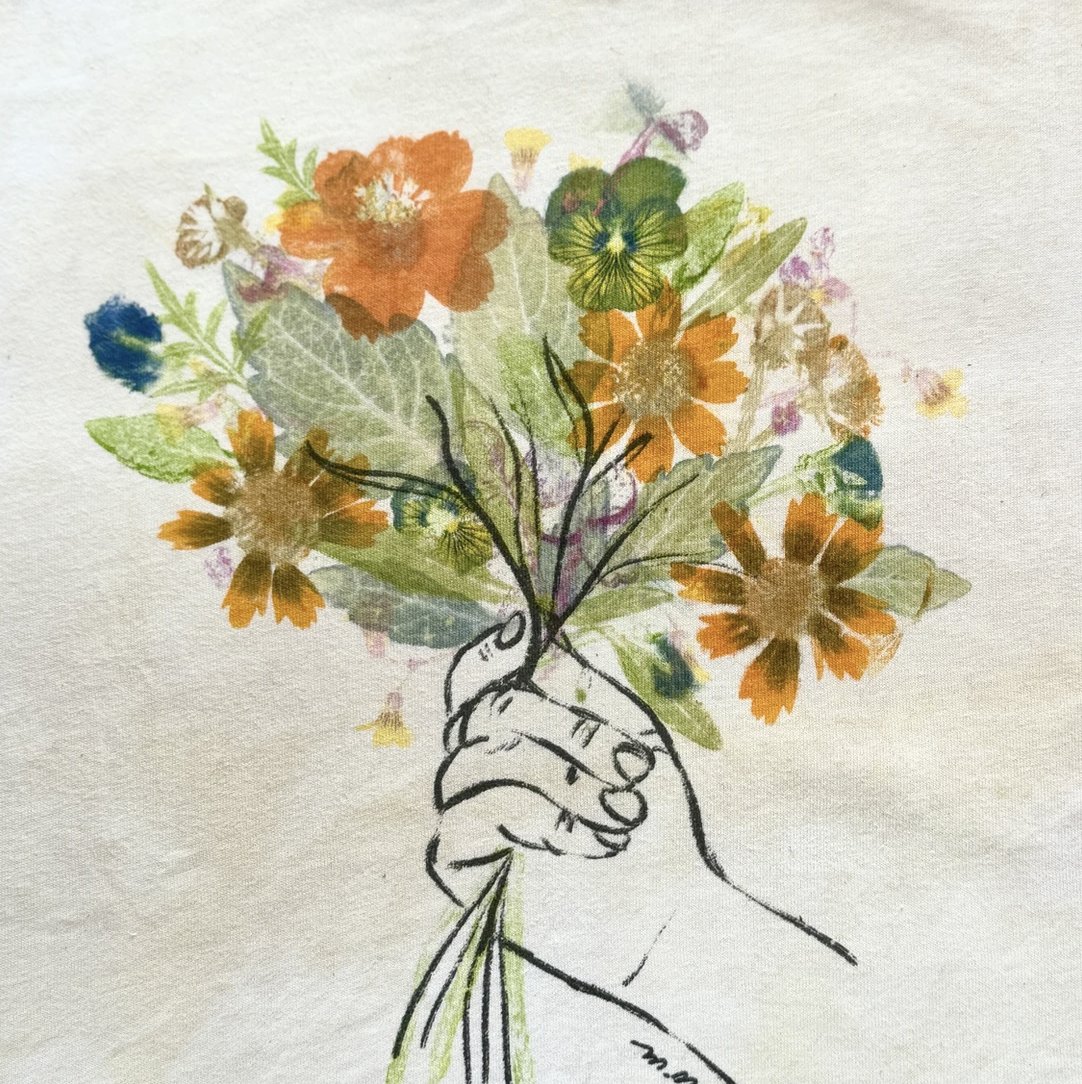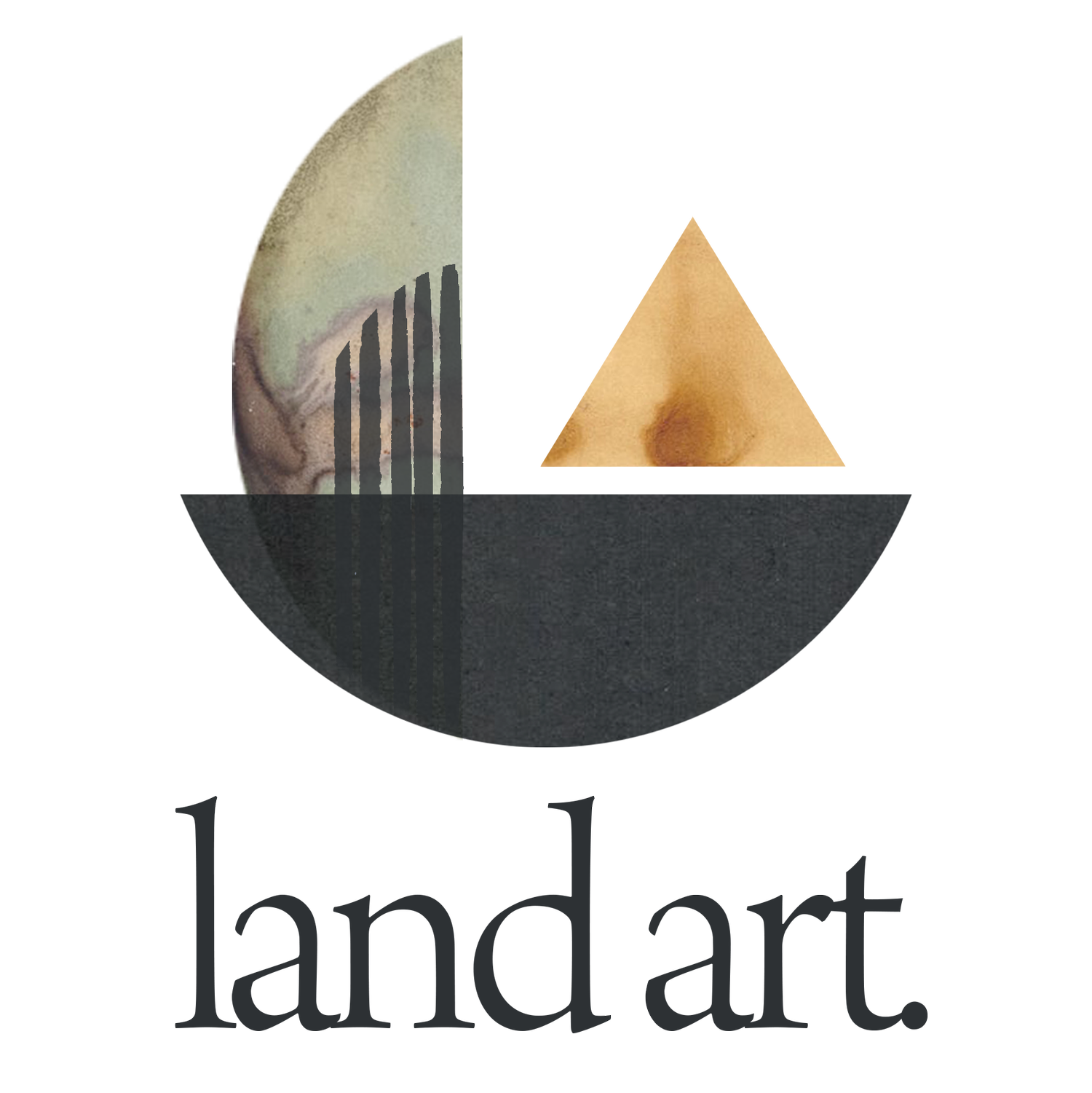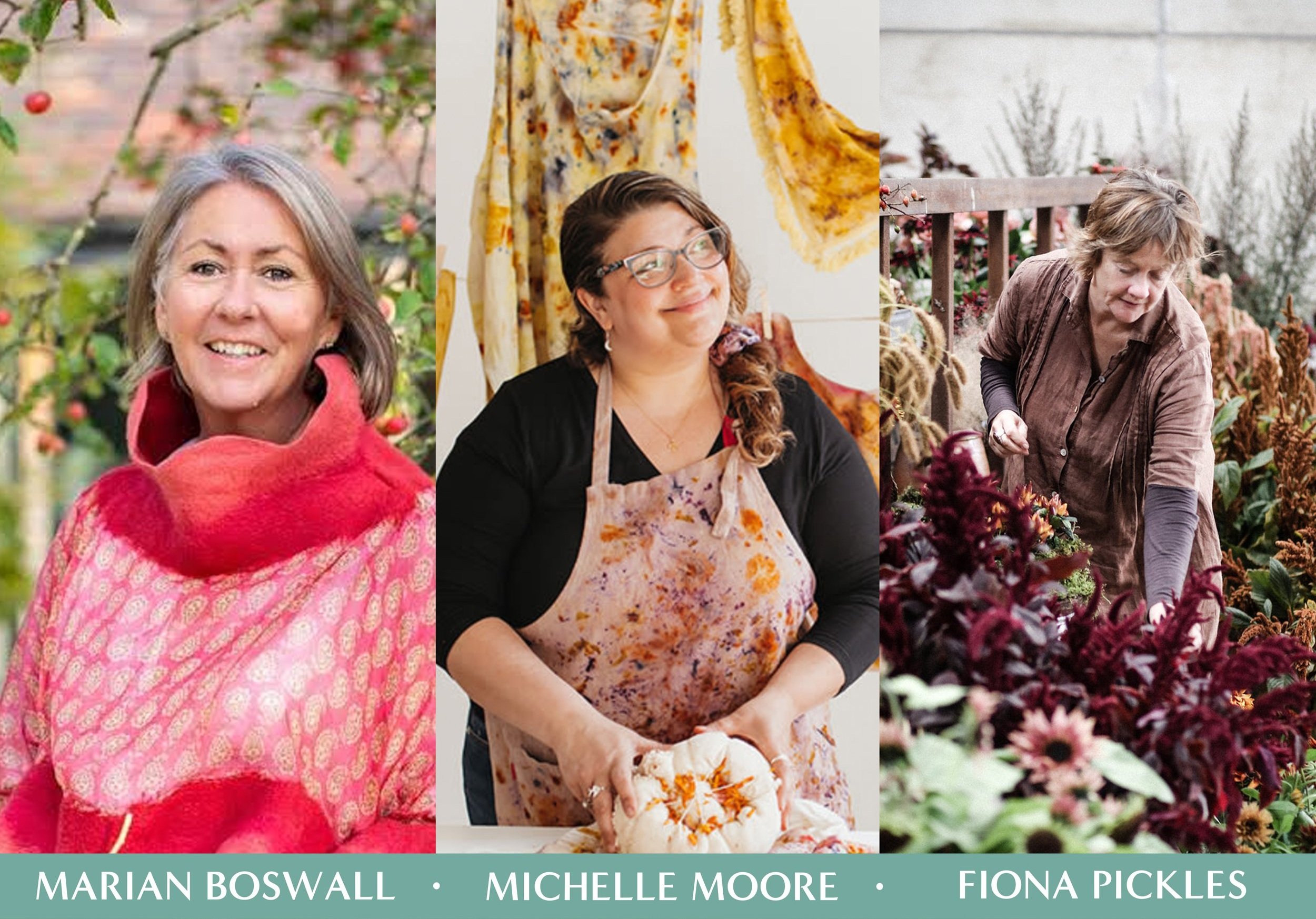
FLOWER PRINTING
ONTO FABRIC
Learn the art of flower + leaf hammering with Michelle Moore
Flower and leaf hammering is the art of transferring colors and shapes from botanical matter onto fabric and paper. This process, also called Tataki Zome (Hammering Dye) is a traditional Japanese technique that has been used for ages.The beautiful art involves a hammer, mallet, or even a smooth rock to pound the color onto the fabric. While most plants will work for this process, I am going to share with you some of my favorite leaves and flowers for creating beautiful and “perfect” prints time and time again. I strive to educate how to create one-of-a-kind designs that are created in small batches, have low environmental impact, and will become a loved and cherished piece that you will enjoy for many years to come.
I will discuss how to get your natural dye garden ready for Summer 2025. I will explain which flowers/leaves work great for this process, where to source supplies, and which hammer works "best" to give the clearest prints possible. I will go over how to prepare/mordant your fibers for the best and longest lasting results. After completing the class, you will receive a downloadable pdf/guide with all information from the class on how to mordant, where to buy/source supplies and a guide to growing the best flowers for this technique.
All sessions are recorded and made available for a week following the course. This also includes times for any feedback questions.
2 Hour Live & Online Session
Upcoming Dates
19th March 6pm
£45

"To me, the process of creating art using nature is more beautiful than the outcome ."- Michelle Moore
Michelle Moore is an American artist and surface designer, born and raised in the beauty of the Hudson Valley region of New York State. Having grown up in the heart of the Catskill Mountains, Michelle has always had an inherent love for the great outdoors. She enjoys living in an area with four distinct seasons of natural wonder to explore. Michelle has an innate curiosity for the worn and weathered, funky and vibrant, and everything in between. She gravitates toward nature and all of its perfect imperfections. She seeks inspiration in a small leaf that has been patterned by the hungry bug, to a perfectly broken seashell washed up on the shore. She also finds inspiration in perusing local consignment shops, or spending the day wandering the colourful streets of Woodstock, NY.
Michelle enjoys working with her environment as much as possible. She utilizes fresh flowers from her garden in natural dyes, eco prints, and cyanotype. She enjoys the experimental aspect of working with nature. Michelle loves making unique, one of a kind textiles, and turning thrift store finds in to new and exciting pieces. Her style is whimsical, joyful, and colorful. Her work is a direct reflection of her curiosity, child-like sense of play, and pure imagination. She is focused on helping inspire the future of the textile industry through the use of slower, more thoughtful and creative processes.
Michelle is a graduate of the Textile + Surface Design program from the Fashion Institute of Technology in New York City, as well as the Fine Art program at SUNY Ulster, where she teaches in the Fine Art Department.













TO PREPARE
You will be sent a PDF guide with everything simple steps for preparations.

TO NOTE
-

Is this process permanent?
No. Nothing is. However, if the fabric is treated your prints will last significantly longer than if this process was not completed. If you follow the recommended care instructions your design will have longevity depending on the flowers/leaves that were used. Also, the great thing about properly treated fibers is that you can repeat the process over and over again throughout the years. If your prints start to fade, do it again! Once the fabric is treated, it remains a part of the fiber and will help bond natural dyes. That means, you can keep printing or try other forms of natural dyeing on your piece.
-

Not all flowers/leaves are created equal.
For the pieces that I have created/finished I mostly use flowers and leaves that are known as good natural dye sources. This gives each piece the very best chance of lasting as long as possible. While I do this to ensure the longevity of the color on wearable art that I sell- It is not a necessary component to create a piece that you love. Just know that some pigment will last longer than others based on the individual qualities of the dyestuff and ability to be colorfast.
It's an exploration. Identify your flowers and most of all have fun.

Our Workshop Feedback

Conversations with Creatives
You can learn more about Michelle and her incredible processes and philosophies as a guest on our talk panel, alongside Marian Boswall and Fiona Pickles.
You can use this complimentary code for 20% off: WORKSHOPINTEREST
~ Seeing Beyond the Ordinary ~




